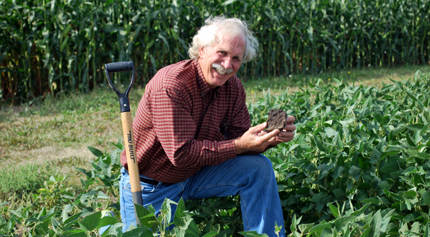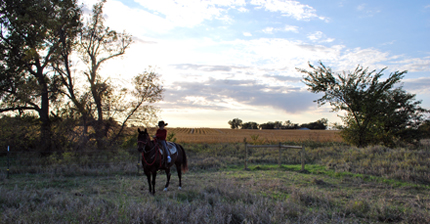Soil Science Society of America
5585 Guilford Road • Madison, WI 53711-5801 • 608-273-8080 • Fax 608-273-2021
www.soils.org
Twitter | Facebook
NEWS RELEASE
Contact: Hanna Jeske, Associate Director of Marketing and Brand Strategy, 608-268-3972, hjeske@sciencesocieties.org
Data-driven decisions on South Dakota land
Jan. 20, 2016 - The climate shifts. Government politics innovate. The workforce ages. Throughout, changes in how land is used are inevitable. Those that work the land are making decisions about what rangeland to make into cropland--and vice versa. When it comes to these land use changes, the smartest decisions are driven by data.
Data can build a bridge between science and informed policy. Based on data estimates, governments can enact polices that affect numerous stakeholders, from corn growers to professional hunters. Scientists such as David Clay, South Dakota State University, believe it’s important to have the most accurate data possible for policy decisions.
“Over the last several years, different studies reported a wide range of land use change estimates for South Dakota and the surrounding states. In areas like South Dakota, these datasets and land use estimates are highly controversial, because they have implications on soil sustainability and the health of animals that need natural habitat,” Clay says. “The wide range in the values focused the scientific community on the methods used to estimate change as opposed to the findings. To address this question we needed a measurement approach that was above dispute."
Clay and his team used databases from the USDA with high-resolution images of land in South Dakota. While other studies relied on a computer system to classify the land, these researchers used their own eyes. “We thought the only reliable method would be to look and see what’s actually happening,” he says.
First, they randomly selected 1,600 points in each of the nine sections of South Dakota. They then visually classified the land into five broad categories: cropland, grassland, non-agriculture, non-water habitat, and water habitat. They performed this classification twice — once on images from 2006 and again on images from 2012 -- to get an idea of how the use of land has changed over time.
Following that analysis, the researchers overlaid these points on another USDA map, this one about soil characteristics. This allowed them to see the characteristics of the soil experiencing land use changes.
This soi ls database classifies land into eight classes. Classes 1-4 are considered good for crops, although with increasing restrictions. Class 5 is usually restricted by high water content because the land might be in a low area or near a stream. Classes 6-8 are thought to be unsuitable for cropland because of high slopes and are best left as rangeland.
ls database classifies land into eight classes. Classes 1-4 are considered good for crops, although with increasing restrictions. Class 5 is usually restricted by high water content because the land might be in a low area or near a stream. Classes 6-8 are thought to be unsuitable for cropland because of high slopes and are best left as rangeland.
Clay reports, “We found that 93% of the South Dakota grasslands converted to croplands (1.8 million acres) between 2006 and 2012 occurred on land suitable for crop production if appropriate management practices are followed. However, land use change was not one direction: 49,000 acre of cropland was converted to grasslands in areas limited by excess water. These areas are often found near streams and ponds.”
In a changing climate, areas like South Dakota may be needed to feed a growing population, Clay adds. Data such as this can be used strategically to ensure that appropriate land is used to produce food and habitat is available for wildlife.
“Another thing we found is that our land use change wasn’t really as drastic as we thought,” he says. “It was being viewed as a doomsday scenario but that’s not what we found. However, with this benchmark data we can now move forward and make sure there are no large negative effects.”
This research was recently published in Agronomy Journal. The research was funded by South Dakota State University, South Dakota, and USDA grants.
Agronomy Journal is the flagship journal of the American Society of Agronomy. Articles convey original research in agriculture, natural resources, soil science, crop science, agroclimatology, agronomic modeling, production agriculture, and instrumentation.